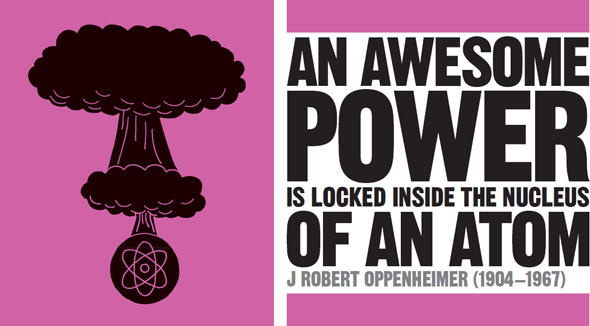
IN CONTEXT
Physics
1905 Albert Einstein’s famous mass-energy equivalence equation E = mc2 describes how tiny masses “store” large amounts of energy.
1932 John Cockcroft and Ernest Walton’s experiments splitting lithium nuclei with protons hint at the enormous energy locked inside the nucleus.
1939 Leó Szilárd spots that a single fission event of uranium-235 releases three neutrons and suggests that a chain reaction is possible.
1954 The USSR’s Obninsk Nuclear Power Plant goes into operation. It is the first nuclear power station to generate electricity for a country’s national grid.
In 1938, the world stood at the threshold of the atomic age. One man would step forward to lead the scientific drive that would usher in this new era. For J Robert Oppenheimer, this decision would ultimately destroy him. He was the administrator of the largest scientific project the world had seen – the Manhattan Project – but came to deeply regret his part in it.
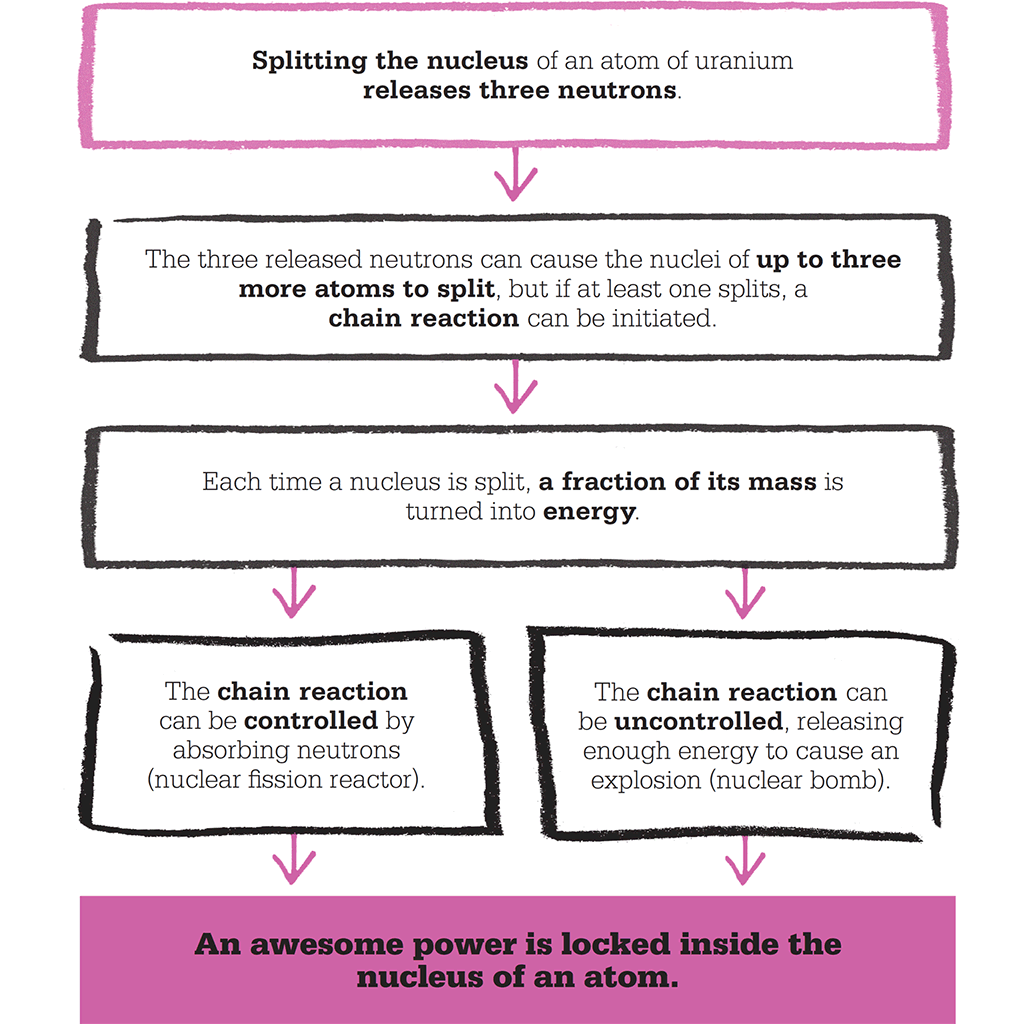
Drive to the centre
Oppenheimer’s varied professional life had been characterized by a ruthless drive to “be where it’s at” and this compulsion took the newly graduated Harvard man to Europe, the centre of a blossoming of theoretical physics. At Göttingen University, Germany, in 1926, he produced the Born–Oppenheimer approximation with Max Born, used to explain, as Oppenheimer put it, “why molecules are molecules”. This method extended quantum mechanics beyond single atoms to describe the energy of chemical compounds. It was an ambitious mathematical exercise as a dizzying range of possibilities for each electron in a molelcule had to be computed. Oppenheimer’s work in Germany has proved crucial to calculating energy in modern chemistry, but the final breakthrough that would lead to the atomic bomb came after he had returned to the USA.
Fission and black holes
The chain reaction that led to the building of the atomic bomb began in mid-December 1938, when German chemists Otto Hahn and Fritz Strassmann “split the atom” in their Berlin laboratory. They had been firing neutrons at uranium, but instead of creating heavier elements by neutron absorption, or lighter elements by emission of one or more nucleons (protons or neutrons), the pair found that the lighter element barium was released, which had 100 fewer nucleons than the uranium nucleus. No nuclear process understood at the time could account for the loss of 100 nucleons.
Perplexed, Hahn sent a letter to colleagues Lise Meitner and Otto Frisch in Copenhagen. Within the month, Meitner and Frisch had worked out the basic mechanism of nuclear fission, recognizing how uranium was split into barium and krypton, the missing nucleons were converted into energy, and a chain reaction could follow. In 1939, Danish physicist Niels Bohr took the news to the USA. His account, along with the publication of the Meitner–Frisch paper in the journal Nature, set the East Coast scientific community ablaze with excitement. Conversations between Bohr and John Archibald Wheeler at Princeton after the annual Theoretical Physics Conference, led to the Bohr–Wheeler theory of nuclear fission.
All the atoms of the same element have nuclei with the same number of protons in them, but the number of neutrons can vary, making different isotopes of the same element. In the case of uranium, there are two naturally occurring isotopes. Uranium-238 (U-238) makes up 99.3 per cent of natural uranium. Its nuclei contain 92 protons and 146 neutrons. The remaining 0.7 per cent is made up of uranium-235 (U-235), whose nuclei contain 92 protons and 143 neutrons. The Bohr–Wheeler theory incorporated the finding that low-energy neutrons could cause fission in U-235, causing the atom to split and releasing energy in the process.
When the news reached the West Coast, Oppenheimer, now at Berkeley, was captivated. He gave a series of lectures and seminars on the brand new theory and quickly saw the potential for making a weapon of awesome power – to his mind “a good, honest, practical way” to use the new science. But while laboratories in East Coast universities raced to replicate the results of early fission experiments, Oppenheimer concentrated on his research into stars contracting and collapsing under their own gravity to form black holes.
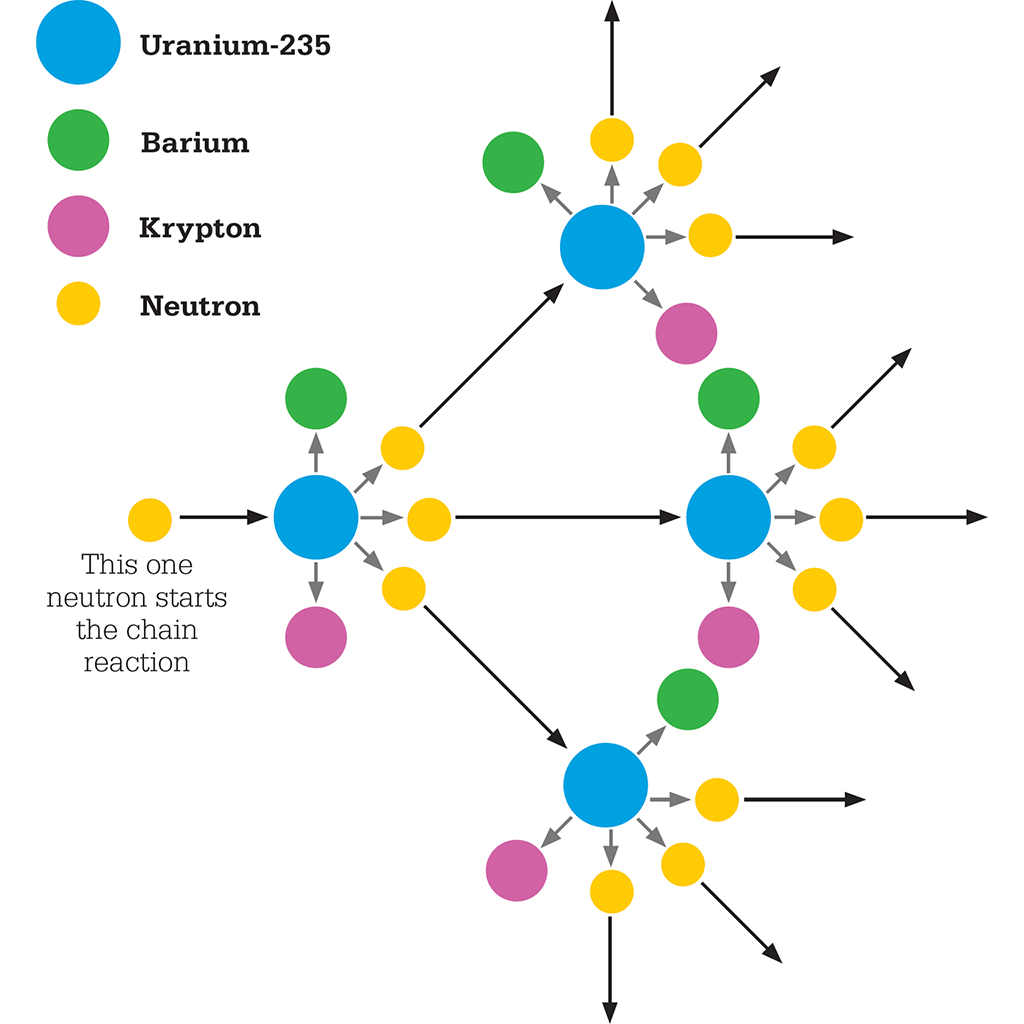
The nuclear fission of uranium-235 (U-235) is started when a neutron hits a U-235 nucleus. The uranium atom splits to form an atom of barium (Ba), an atom of krypton (Kr), and three more neutrons. The three neutrons can then go on to cause fission in more atoms, causing a chain reaction. Each time an atom splits, energy is released.
Birth of the idea
The idea of a nuclear weapon was already in the air. As early as 1913, H G Wells wrote of “tapping the internal energy of atoms” to make “atomic bombs”. In his novel The World Set Free, the innovation was set to happen in the year 1933. In 1933 itself, Ernest Rutherford touched on the large amount of energy released during nuclear fission in a speech printed in The Times of London. However, Rutherford dismissed the idea of harnessing this energy as “moonshine”, since the process was so inefficient it required much more energy than it released.
It took a Hungarian living in Britain named Leó Szilárd to see how it could be done, and also to realize the horrific consequences for a world heading towards war. Pondering Rutherford’s lecture, Szilárd saw that the “secondary neutrons” emerging from the first fission event could themselves create further fission events, resulting in an escalating chain reaction of nuclear fission. Szilárd later recalled, “There was little doubt in my mind that the world was headed for grief.”
Experiments in Germany and the US showed that the chain reaction was indeed possible, prompting Szilárd and another Hungarian emigré, Edward Teller, to approach Albert Einstein with a letter. Einstein passed the letter on to US President Roosevelt on 11 October 1939 and just ten days later the Advisory Committee on Uranium was set up to investigate the possibility of developing the bomb in the United States first.
Birth of Big Science
The Manhattan Project that arose from this resolution was science on the grandest scale imaginable. A multi-armed organization that spread over several large sites in the USA and Canada and countless smaller facilities, it employed 130,000 people and by its close had swallowed in excess of US$2 billion (more than US$26bn, or £16bn, in 2014 money) – all in top secrecy.
Early in 1941, the decision was taken to pursue five separate methods of producing fissionable material for a bomb: electromagnetic separation, gaseous diffusion, and thermal diffusion to separate isotopes of uranium-235 from uranium-238; and two lines of research into nuclear reactor technology. On 2 December 1942, the very first controlled chain reaction involving nuclear fission was carried out in a squash court at the University of Chicago. Enrico Fermi’s Chicago Pile-1 was the prototype for the reactors that would enrich uranium and create the newly discovered plutonium – an unstable element that is even heavier than uranium, can also cause a rapid chain reaction, and can be used to create an even deadlier bomb.
"We have made a thing, a most terrible weapon, that has altered abruptly and profoundly the nature of the world. And by so doing we have raised again the question of whether science is good for man."
J Robert Oppenheimer
The Magic Mountain
Selected to head up the Manhattan Project’s research into secret weapons, Oppenheimer approved a disused boarding school at Los Alamos Ranch in New Mexico as the site for research facilities for the project’s final stages – the construction of an atomic bomb. “Site Y” would see the highest concentration of Nobel laureates ever gathered in one place.
Since much of the important science had already been done, many of the Los Alamos scientists dismissed their work in the New Mexico desert as merely a “problem of engineering”. However, it was Oppenheimer’s coordination of 3,000 scientists that made the construction of the bomb possible.
Change of heart
The successful Trinity test on 16 July 1945 and subsequent detonation of a bomb called “Little Boy” above Hiroshima in Japan on 6 August 1945 left Oppenheimer jubilant. However, the event was to cast a long shadow over the Los Alamos director. Germany had already surrendered by the time the bomb was dropped, and many Los Alamos scientists felt a public demonstration of the bomb was all that was necessary – after seeing its awesome power, Japan would be sure to surrender. However, while Hiroshima was believed by some to be a necessary evil, the detonation of a plutonium device – called “Fat Man” – over Nagasaki on 9 August was hard to justify. A year later, Oppenheimer publicly stated his opinion that the atom bombs had been dropped on a defeated enemy.
In October 1945, Oppenheimer met President Harry S Truman and told him, “I feel I have blood on my hands”. Truman was furious. Congressional hearings stripped the scientist of his security clearance in 1954, ending his ability to influence public policy.
By then, Oppenheimer had overseen the advent of the military–industrial complex and ushered in a new era of Big Science. In presiding over the creation of a new scientific terror, he became a symbol for the moral consequences of their actions that scientists must now consider.
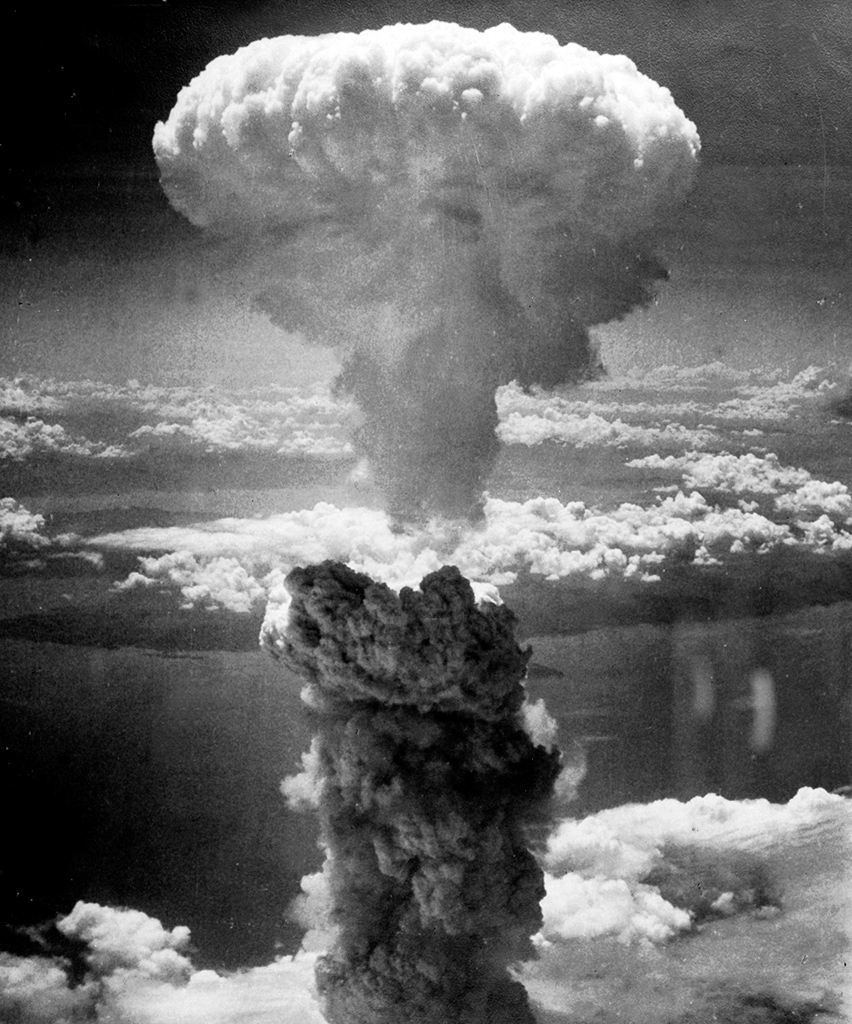
On 9 August 1945, the plutonium bomb “Fat Man” was dropped over Nagasaki in southern Japan. About 40,000 people were killed instantly, and many more died in the following weeks.
J ROBERT OPPENHEIMER
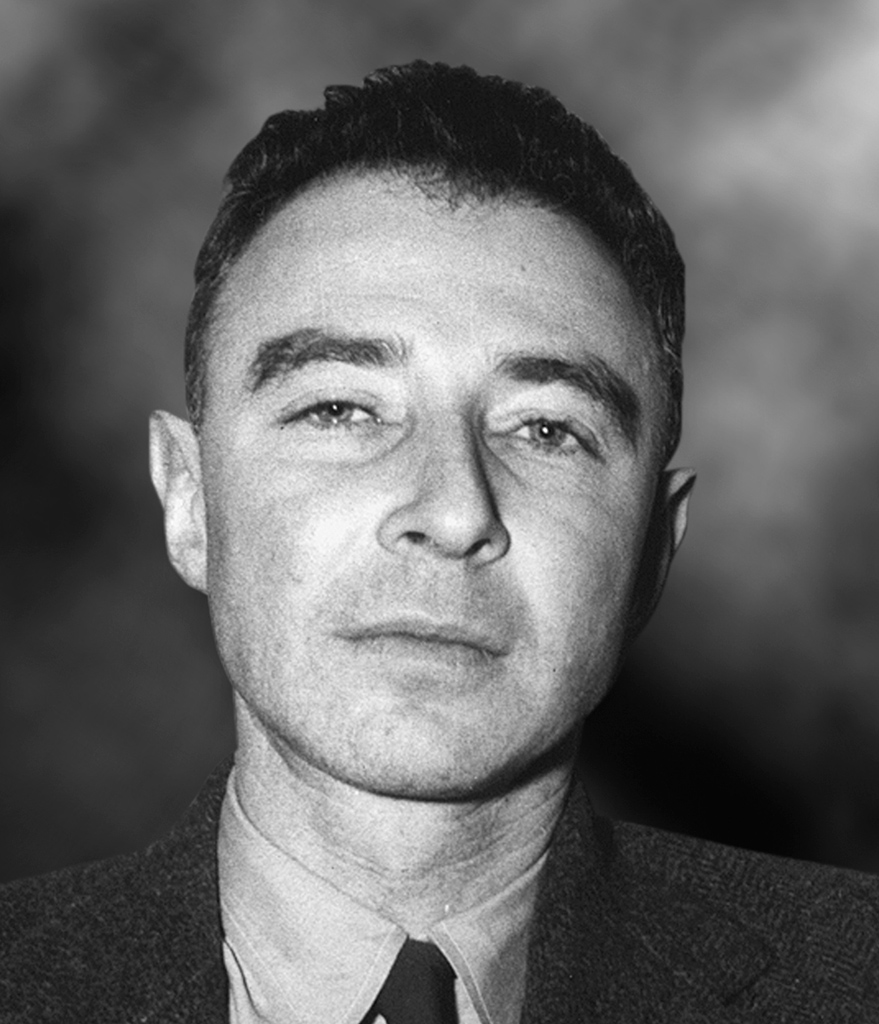
Educated at the Ethical Culture school of New York City, Julius Robert Oppenheimer was a thin, highly-strung boy with a quick grasp of concepts. After graduating from Harvard University, he spent two years at Cambridge University under Ernest Rutherford, followed by a move to Göttingen in Germany, where he was taken under the wing of Max Born.
Oppenheimer was a complex character whose great talent was to be at the centre of things, and he made influential friends wherever he went. However, he had a notoriously sharp tongue and a desire to be regarded as a superior intellect. Although he is best known for his work on the Manhattan Project, his most lasting contribution to science was his pre-war research at the University of California, Berkeley, on neutron stars and black holes.
Key works
1927 On the Quantum Theory of Molecules
1939 On Continued Gravitational Contraction
See also: Marie Curie • Ernest Rutherford • Albert Einstein